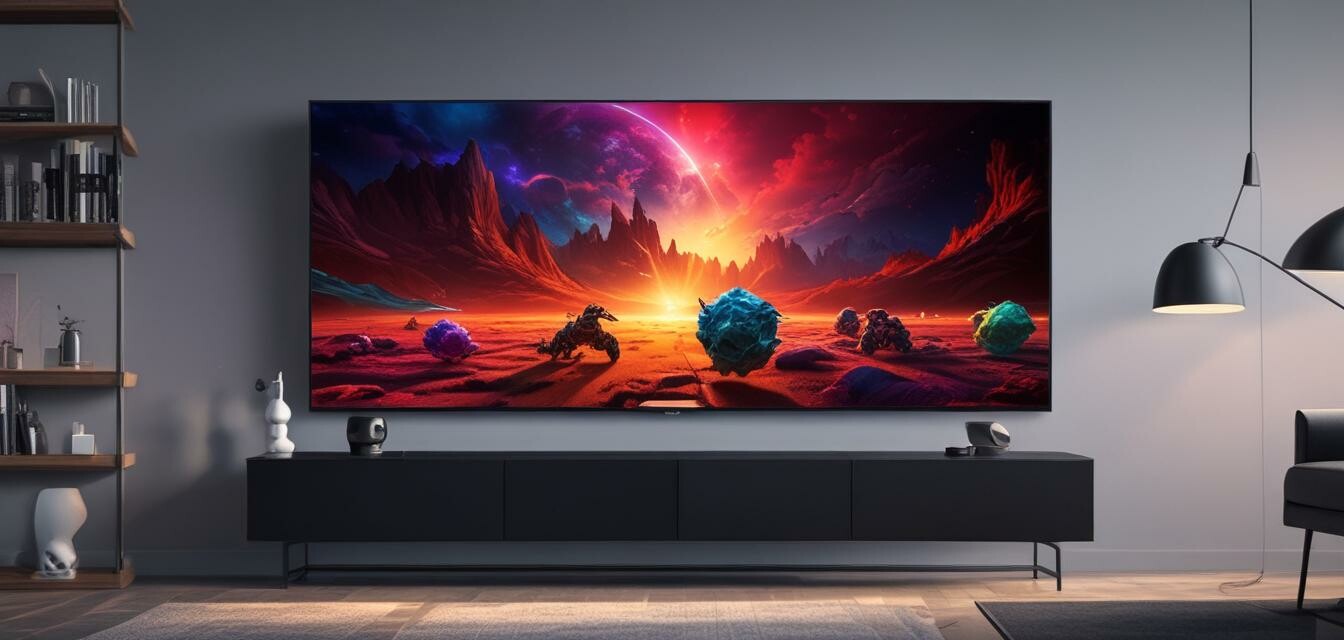
Key Factors to Consider When Buying an OLED Gaming TV
Key Takeaways
- Resolution and refresh rate are crucial for an immersive gaming experience.
- Lower input lag can significantly enhance gameplay performance.
- Consider the TV's connectivity options for seamless device integration.
- HDR capabilities can greatly improve picture quality in games.
- Screen size plays an important role in your overall gaming setup.
When it comes to gaming, having the right television can make all the difference. OLED gaming TVs offer stunning visuals, quick response times, and a range of features that can enhance your gaming experience. But with so many options available, it can be overwhelming trying to choose the best one for your needs. In this guide, we’ll explore the key factors you should consider when purchasing an OLED gaming TV, ensuring you make an informed choice.
1. Resolution Matters
The resolution of your TV plays a significant role in the overall visual experience while gaming. Here’s a brief overview:
| Resolution | Description |
|---|---|
| 1080p (Full HD) | Basic HD resolution, good for casual gaming. |
| 1440p (Quad HD) | Stronger detail, improving overall quality. |
| 4K (Ultra HD) | Crystal-clear images, ideal for immersive gaming. |
| 8K | The latest in resolution technology; high-quality but limited content. |
2. Refresh Rate and Input Lag
For gamers, especially those playing fast-paced games, refresh rate and input lag are crucial. Here’s what they mean:
- Refresh Rate: Measured in Hertz (Hz), this indicates how many times per second the image is refreshed. A higher refresh rate means smoother motion. Look for at least 120Hz for a truly immersive gaming experience.
- Input Lag: The time it takes for a command on your controller to be reflected on the screen. Aim for a TV with input lag below 20ms for better responsiveness during gameplay.
| TV Model | Resolution | Refresh Rate | Input Lag |
|---|---|---|---|
| LG C3 Series 65-Inch Class OLED evo 4K TV | 4K | 120Hz | 10ms |
| Hisense 100-Inch Class U8 Series Mini-LED ULED 4K TV | 4K | 144Hz | 12ms |
3. Connectivity Options
Ensure your TV has multiple HDMI ports and supports HDMI 2.1 for the latest gaming consoles. Check for:
- HDMI ports (4-5 are ideal)
- USB ports for easy device connection
- Bluetooth compatibility for wireless audio solutions
Connectivity is vital for integrating all your gaming accessories seamlessly. For example, using your TV with a wireless gaming headset can enhance your experience significantly.
4. HDR Technology
High Dynamic Range (HDR) enhances the details and colors in the image, resulting in a more lifelike visual experience. Consider the following HDR types:
- HDR10: The most common standard for HDR.
- Dolby Vision: Offers dynamic metadata, which improves HDR performance in different scenes.
- HLG: Primarily used for broadcast TV.
5. Screen Size
The size of your gaming TV will depend on your room setup and viewing distance. Here’s a quick checklist:
- Viewing Distance: For a 65-inch TV, a distance of about 8-10 feet is ideal, while a 100-inch model requires at least 12 feet.
- Room Space: Ensure there is ample wall space to fit your TV comfortably.
6. Additional Features
Look for special features that can enhance your gaming experience:
- Voice Control: Built-in voice assistants make it easier to control your TV without a remote.
- AI-Powered Features: TVs like the LG C3 offer AI picture adjustments to optimize settings automatically.
- Variable Refresh Rate (VRR): Reduces screen tearing for a smoother gameplay experience.
Conclusion
Selecting the right OLED gaming TV is crucial for enhancing your gaming experience. By considering factors such as resolution, refresh rates, HDR capabilities, and connectivity options, you’ll be well-equipped to find the perfect TV suited for your gaming needs. Check out our detailed guides on budget-friendly gaming TVs and HDR TVs for gaming for more options!
Pro Tips for Buyers
- Test the TV in a store to get a feel for its picture quality.
- Check for firmware updates frequently to ensure optimal performance.
- Read reviews from actual users to benefit from their experiences.
Pros
- Stunning picture quality with deep blacks.
- Fast refresh rates for competitive gaming.
- Wide viewing angles without loss of quality.
Cons
- Price can be higher compared to LED TVs.
- Risk of burn-in with static images over time.
